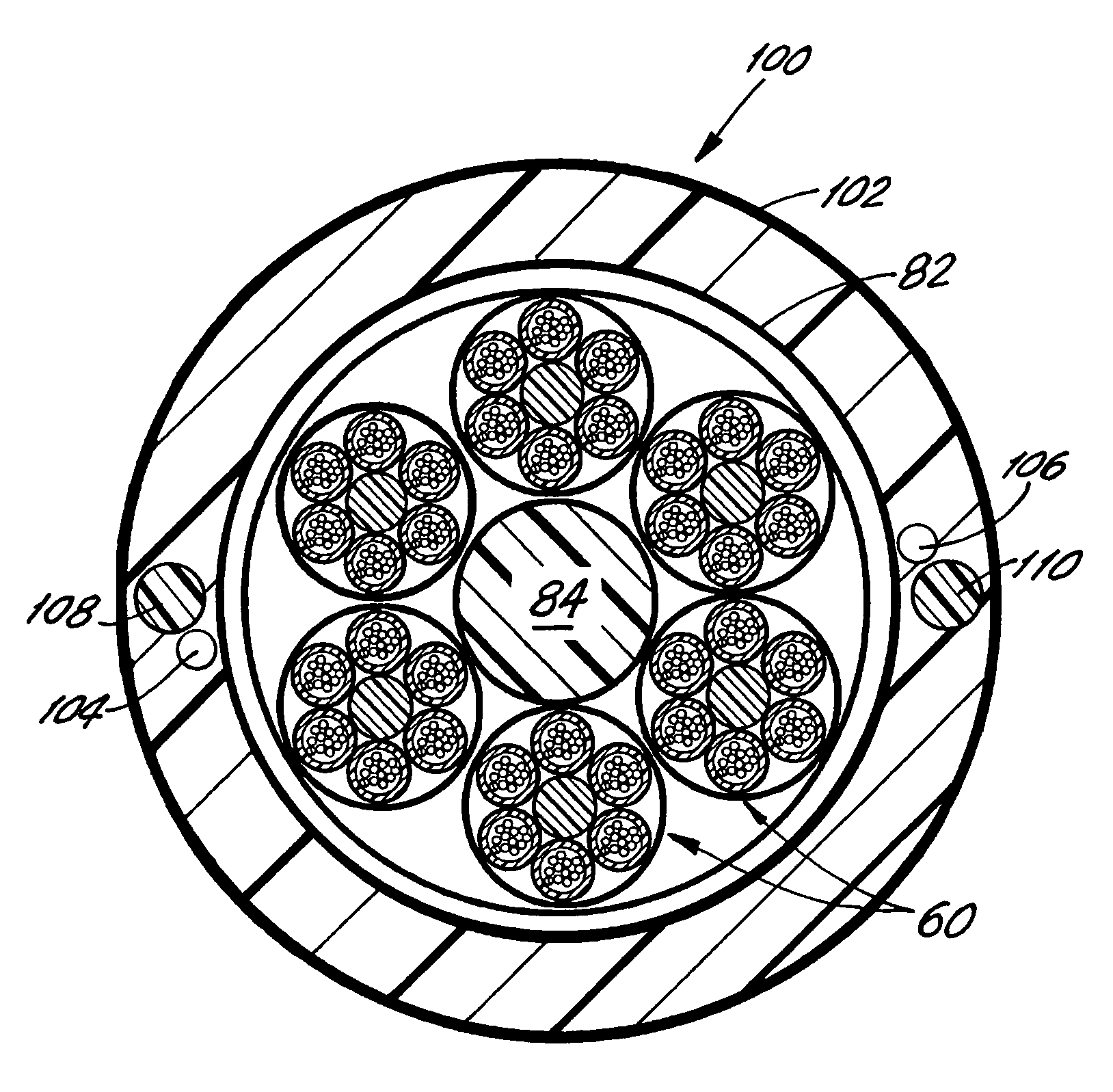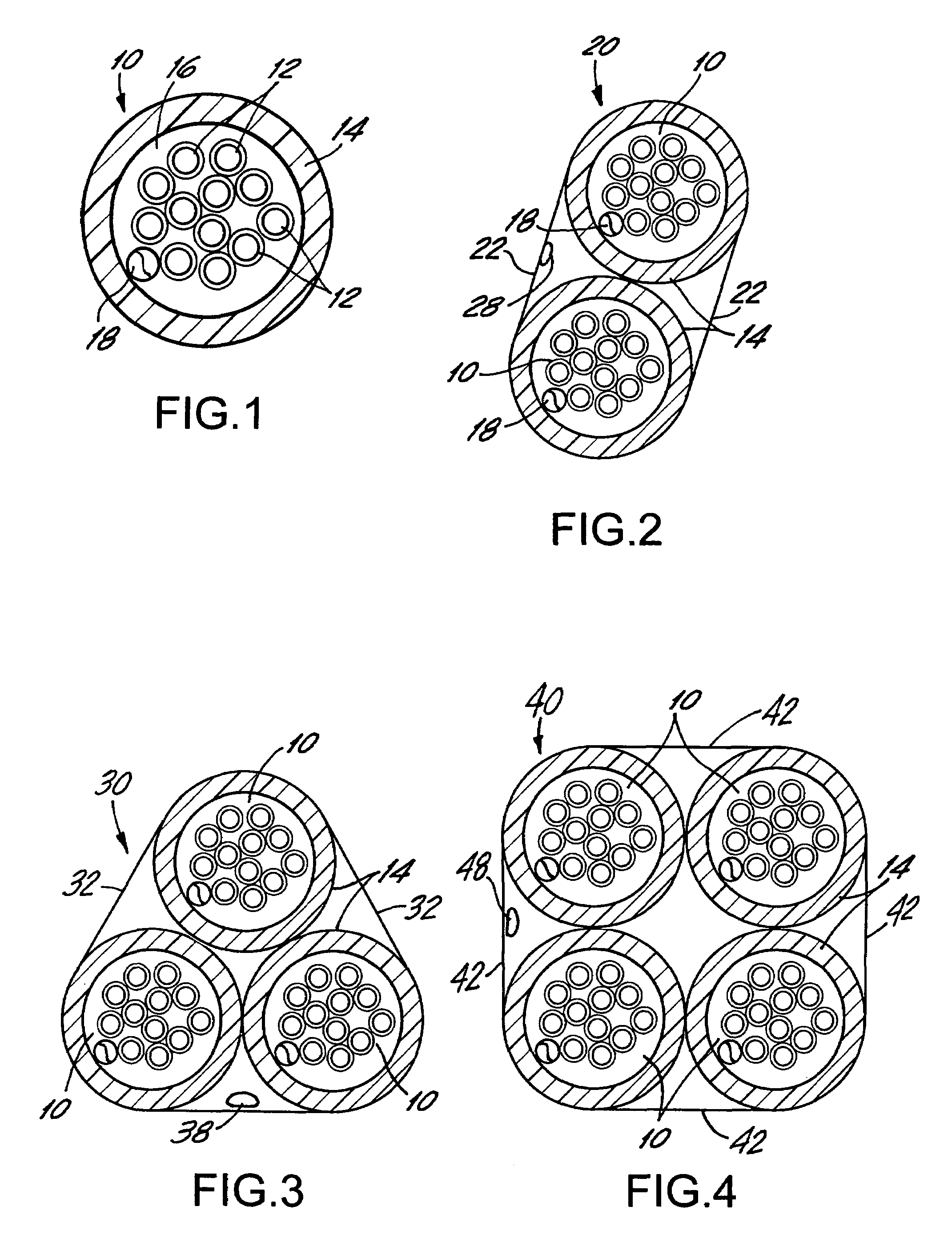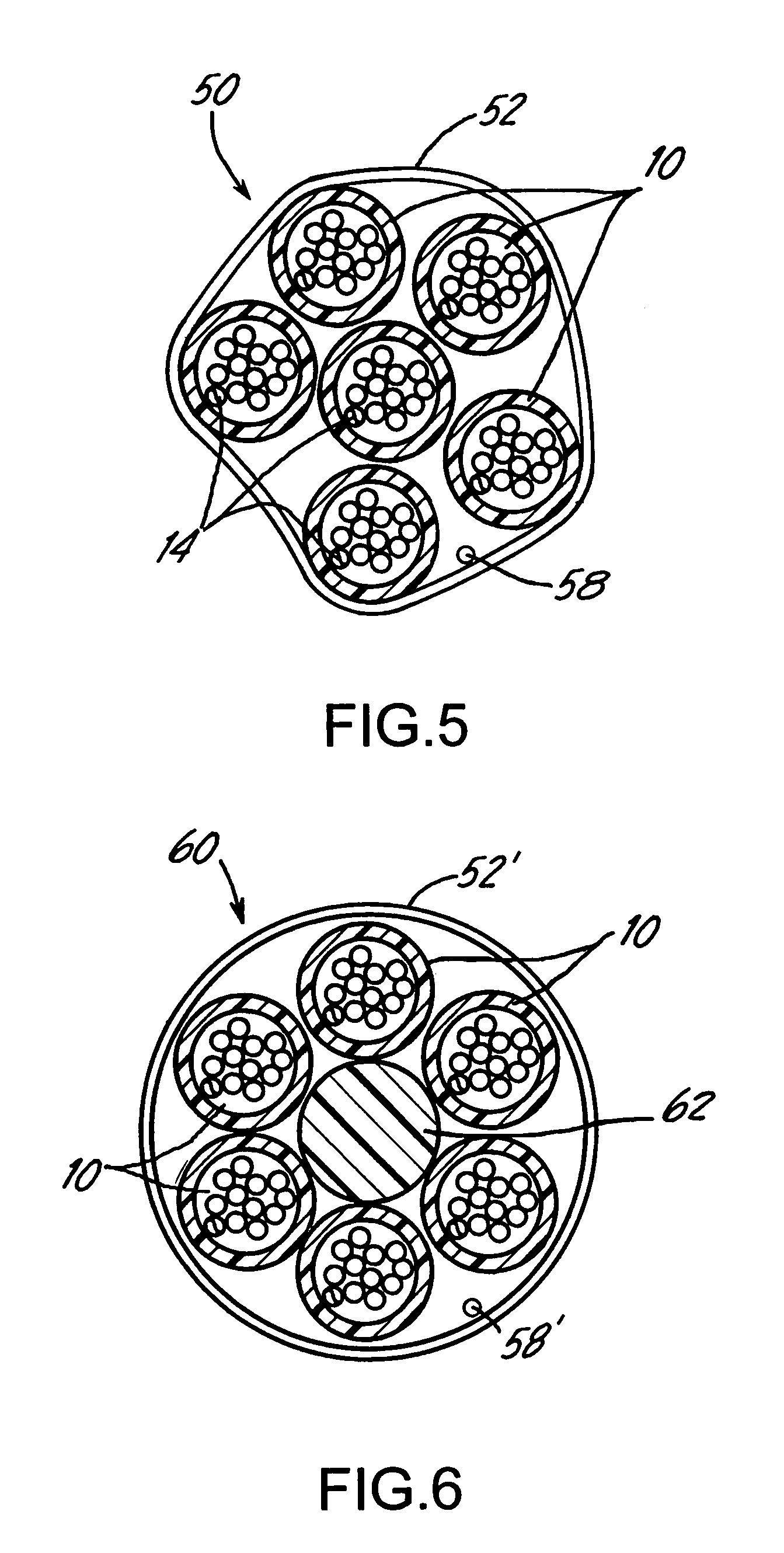High count optical fiber cable
a high-count, optical fiber technology, applied in the direction of optics, fibre mechanical structures, instruments, etc., can solve the problems of difficult identification of any one fiber inside the cable, difficult to produce modules having more than 12, and complicated manufacturing process
- Summary
- Abstract
- Description
- Claims
- Application Information
AI Technical Summary
Benefits of technology
Problems solved by technology
Method used
Image
Examples
first embodiment
[0033]FIG. 7 is a cross-sectional view of a 432-optical fiber cable core 70, according to the invention. The cable core 70 includes six of the 72-fiber bundles 50 shown in FIG. 5. The thin skins 52 of each bundle may be coded by color and / or marking indicia to permit location of and access to a desired one of the cable units 10 contained in the bundle. All of the fiber bundles 50 are contained within a core tube 72 having an outer diameter of, e.g., about 0.74 inch (18.76 mm) and an inner diameter of, e.g., about 0.60 inch (15.24 mm). The core tube 72 is preferably made of plastics such as, e.g., polyethylene with a wall thickness of about 0.035 inch (0.89 mm). The cable core 70 in FIG. 7 lacks any filler element, and is packed with water swellable yarns 74 and has a layer of water swellable tape 76 on the inner circumference of the core tube 72. Water ingress along each of the bundles 50 may also be prevented by introducing a super absorbent powder over the bundle skins 52.
second embodiment
[0034]FIG. 8 is a cross-sectional view of a 432-optical fiber cable core 80 according to the invention. The cable core 80 is comprised of a core tube 82 which may be the same or similar to the core tube 72 in FIG. 7. Unlike the FIG. 7 embodiment, however, the cable core 80 maintains an even or symmetrical configuration of the six 72-fiber bundles 60 in FIG. 6 with the aid of a filler element 84. The element 84 extends along the length of the cable core substantially coincident with the core axis. The skins 52 of the fiber bundles 60 are also preferably coded by color and / or marking indicia to facilitate identification of a given fiber among the 36 cable units inside the core. Voids between the individual bundles 60 and the core tube 82 may be packed with yarns (not shown), and a layer of water blocking tape 86 may be provided on the inner circumference of the core tube 82 to reduce or eliminate moisture. The core tube 82 may be formed using the same material and dimensions as the tu...
third embodiment
[0035]FIG. 9 is a cross-sectional view of a 432-fiber cable core 90 according to the invention. The configuration shown in FIG. 9 is a so-called central core cable construction, and includes a core tube 92 and three fiber bundles 94 each of which contains twelve of the cable units in FIG. 1. Each bundle 94 may have a different colored thin skin 96 of polypropylene with a thickness of about 0.008 inch. The outer diameter of the core tube 92 is about 0.72 inch (18.3 mm) and the outer diameter of each of the fiber bundles 94 is about 0.26 inch (6.6 mm). Each of the fiber bundles 94 thus contains 144 optical fibers any given one of which can be identified and accessed by appropriate coding and the use of multiple rip cords. As in the embodiments described above, voids between the individual bundle skins 96 and the inside surface of the core tube may be packed with yarns (not shown), and a layer of water blocking tape 98 may be placed on the inside surface of the tube 92 to reduce or eli...
PUM
 Login to View More
Login to View More Abstract
Description
Claims
Application Information
 Login to View More
Login to View More - R&D
- Intellectual Property
- Life Sciences
- Materials
- Tech Scout
- Unparalleled Data Quality
- Higher Quality Content
- 60% Fewer Hallucinations
Browse by: Latest US Patents, China's latest patents, Technical Efficacy Thesaurus, Application Domain, Technology Topic, Popular Technical Reports.
© 2025 PatSnap. All rights reserved.Legal|Privacy policy|Modern Slavery Act Transparency Statement|Sitemap|About US| Contact US: help@patsnap.com



